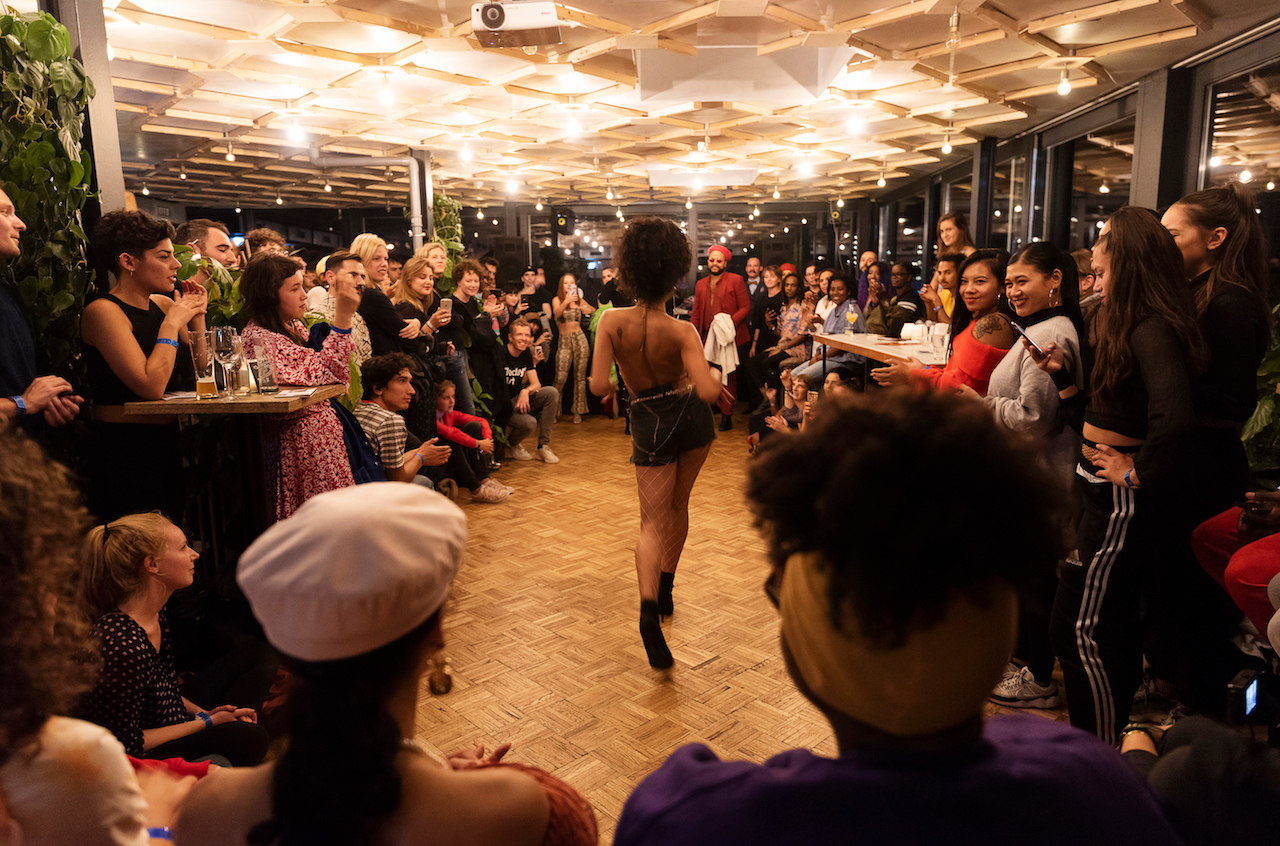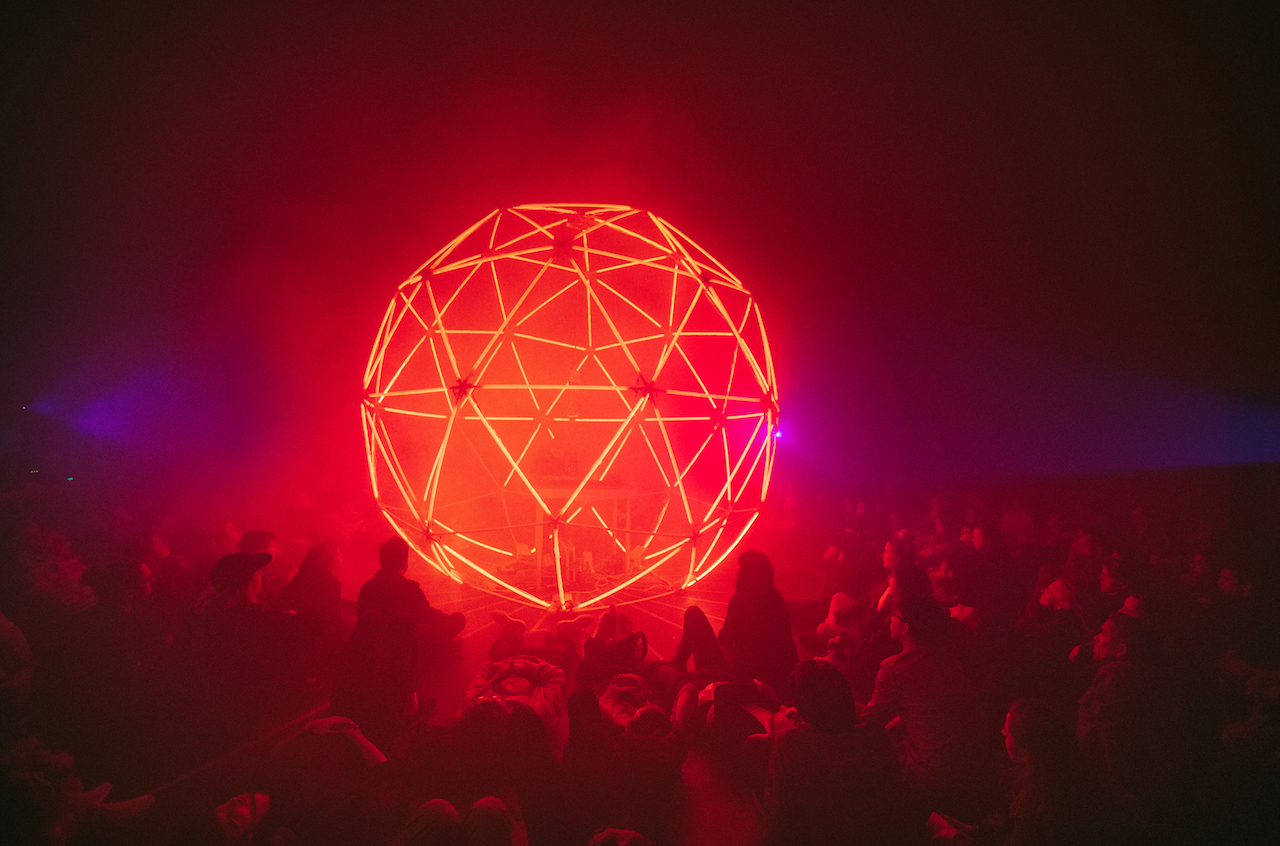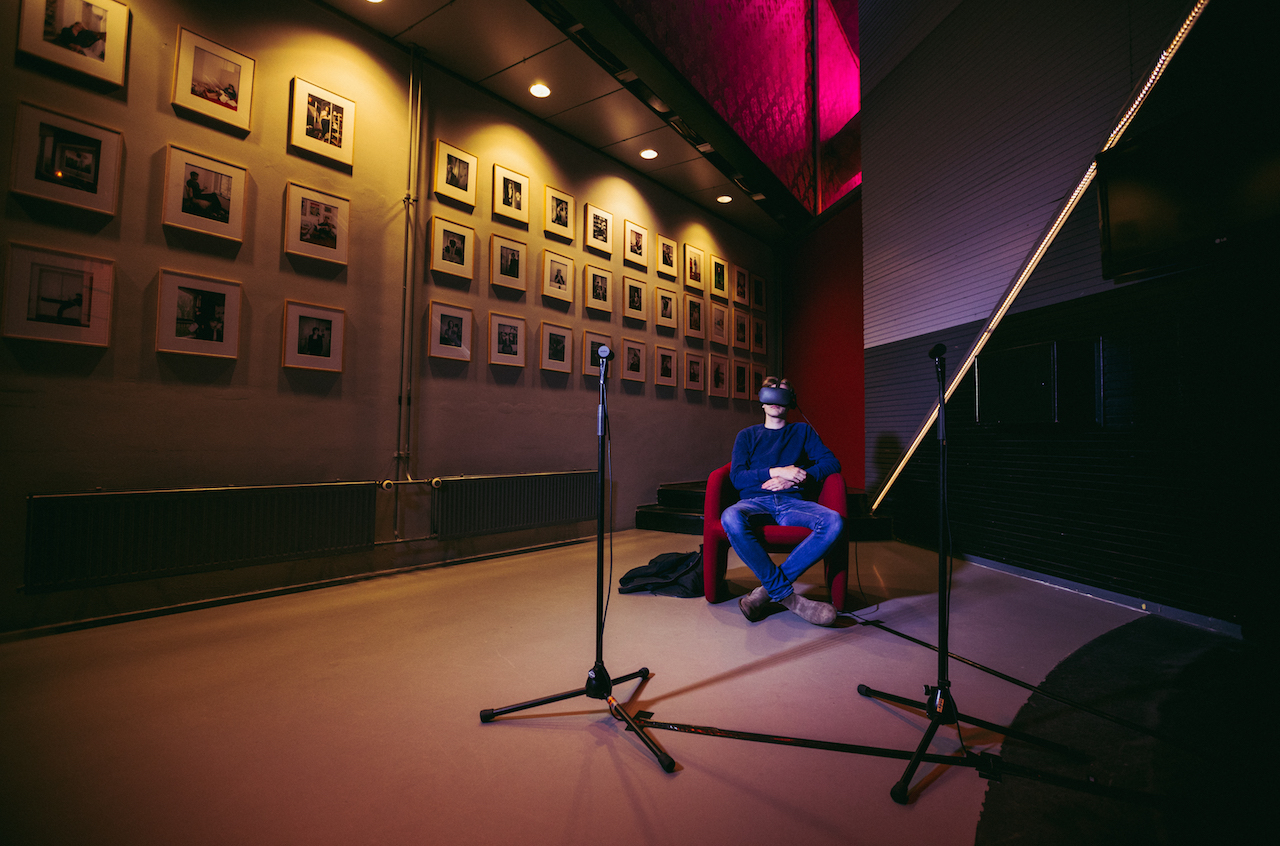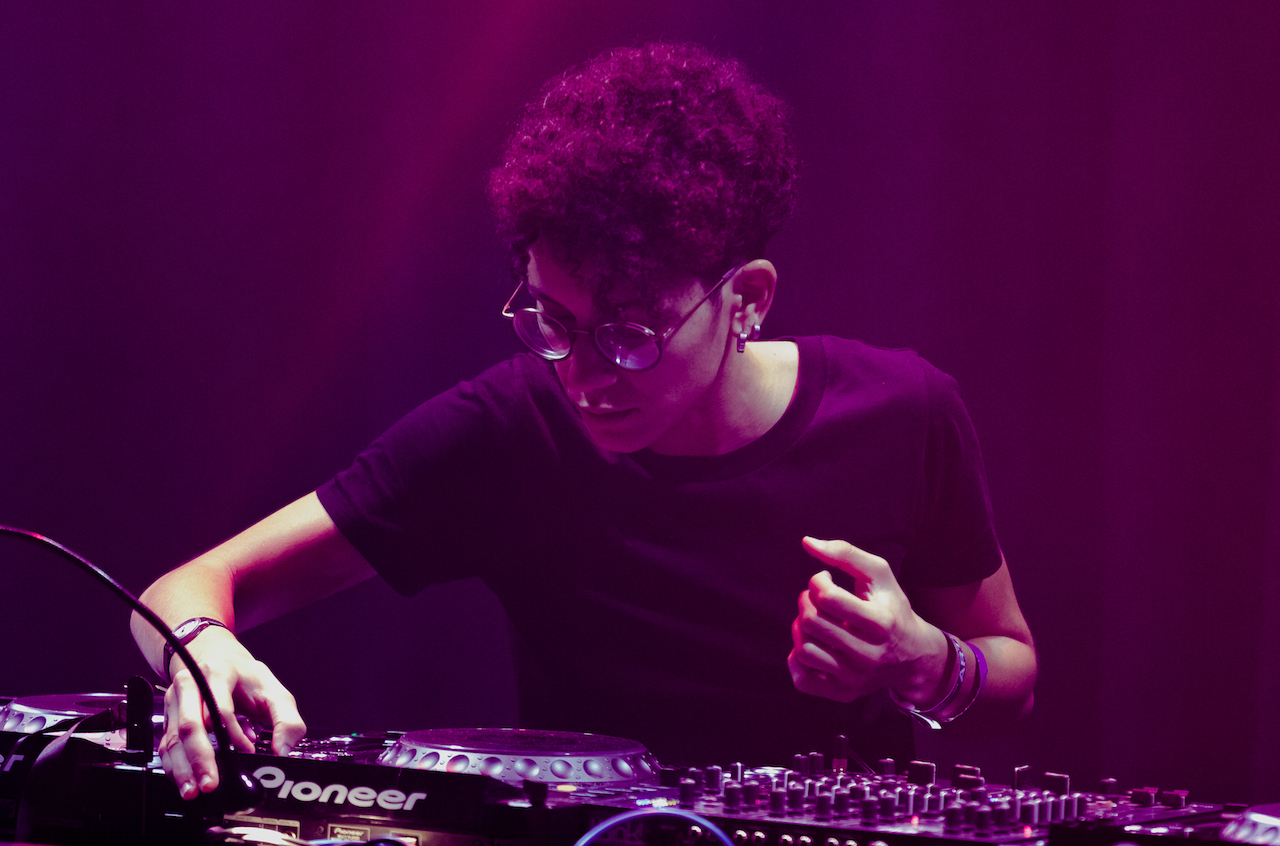- Queer catwalks, audiovisual spectacles and a weekend of heavy rain in The Hague.
- "Move aside, this is not your space tonight!" The demand cleared the dance floor. A few stragglers, visiting the rooftop bar for a quiet drink, stepped to one side. The queer activist and fashion designer Yamuna Forzani reclaimed the space and set it free for Friday's Pineapple Kiki Ball. Local voguers and models burst down the runway, dressed top to toe in extravagance or barely dressed at all. This was one of the first things I saw at TodaysArt, and I took it as an early sign that this edition might offer something very different to years previous. But, in the end, as much as I searched for that same energy and those vibrant, glossy faces, none of them reappeared.
Disrupting public space has always been a necessary part of TodaysArt. It offers an annual reminder that public space is, in reality, often governed by unwritten rules and restrictions. "Who owns this space?" is a question with particular resonance for The Hague, a city where the squat scene gave birth to Bunker Records, the label and crew often referred to as the European equivalent of Detroit's Underground Resistance. Yet, perhaps due to the heavy rain that fell most of the weekend, the city felt quieter than usual this year. There seemed to be little going on to disrupt. (That said, there was an unintended intervention at FullDome on Saturday evening, when the last performance was cancelled due to a noise complaint.)
The current image of The Hague isn't suited to young people. It's not surprising that, come the weekend, many take the short train journey from the political capital to busier nighttime hubs like Amsterdam or Rotterdam. Of the small handful of things attracting people to The Hague, TodaysArt is one of the biggest, serving as a platform for multidisciplinary art with a heavy interest in digital culture. In fact, it's easier to think about TodaysArt as a network—a term they use themselves. This outlines their approach to programming, where they present artists in collaboration with one of many international partnerships and organisations, such as SHAPE, We Are Europe and Azimuth. Organisationally, it's a nice, inclusive touch—each partner selects the artists they deem best suited to the festival—but the downside was too much branding. Someone pointed out the large beer ad projected above Legowelt while he played.
Musically, some of the best programming felt wasted on barely filled rooms. Take Friday night at Paard, which boasted an impressive lineup of Nkisi, Suicideyear, DJ Lostboi and DJ Lag. Each act brought so much energy to the room, but, enjoyable as it was to have enough space to dance, it felt like the festival could have done more to pull a bigger crowd. Fortunately by Saturday the space between dancers had dwindled. Deena Abdelwahed, the standout performer of the day, played later than planned due to a missed flight, though the new slot ended up making more sense for her set, which perfectly negotiated a sweet spot between claustrophobic techno, jagged drums and global bass. After Dasha Rush, it was a breath of fresh air.
Where the festival really excelled was its focus on partnering sound and visual artists. FullDome, a 15-meter structure erected temporarily on Spuiplein in collaboration with The Society For Arts And Technology (SAT) of Montréal, featured 360-degree projections and was easily the most memorable venue. Heads and bodies laced horizontally together on the cold floor—one woman offered to share her jacket with me as a pillow—as the audience submersed itself into a visual vacuum of earthly powers—eruptions, explosions, clouds —provided by Nikki Hock and soundtracked by SK U Kno (AKA Suzanne Kraft). It was a stark and welcome contrast to many of the other audiovisual performances. At Theater aan het Spui, punters were lined into rigid seats, dictated by the rules of the theatre: to sit silently and focus. This worked brilliantly for Lotic and the choreographer Roderick George's Embryogenesis, their harmonic partnership capturing everyone's full attention. But less so for Shed, whose static visuals made many zone out, or worse, leave the room.
The closing concerts, also seated, took place in The Hague's Royal Theatre, Koninklijke Schouwburg, which felt like a fitting place to end the weekend. Flashes of ornate decor, exposed by the cones of light dancing around Caterina Barbieri's modular noise, ruptured the formality of the room. The lack of timetable clashes meant everyone still at the festival was in the audience, a large cluster of dark woollen coats, damp umbrellas and mostly middle-aged faces. The buzz from my opening experience was still absent, and as much as the festival had to offer overall, the closing note felt a little unfulfilling. So much of TodaysArt's programming was accessible, progressive even. It's just a shame they couldn't draw a young enough crowd.
Photo credit /
Maurice Mikkers - Lead, Red Dome, VR
Aron Suveg - Yamuna Forzani
Stephan C. Kaffa - Deena Abdelwahed
 The current image of The Hague isn't suited to young people. It's not surprising that, come the weekend, many take the short train journey from the political capital to busier nighttime hubs like Amsterdam or Rotterdam. Of the small handful of things attracting people to The Hague, TodaysArt is one of the biggest, serving as a platform for multidisciplinary art with a heavy interest in digital culture. In fact, it's easier to think about TodaysArt as a network—a term they use themselves. This outlines their approach to programming, where they present artists in collaboration with one of many international partnerships and organisations, such as SHAPE, We Are Europe and Azimuth. Organisationally, it's a nice, inclusive touch—each partner selects the artists they deem best suited to the festival—but the downside was too much branding. Someone pointed out the large beer ad projected above Legowelt while he played. Musically, some of the best programming felt wasted on barely filled rooms. Take Friday night at Paard, which boasted an impressive lineup of Nkisi, Suicideyear, DJ Lostboi and DJ Lag. Each act brought so much energy to the room, but, enjoyable as it was to have enough space to dance, it felt like the festival could have done more to pull a bigger crowd. Fortunately by Saturday the space between dancers had dwindled. Deena Abdelwahed, the standout performer of the day, played later than planned due to a missed flight, though the new slot ended up making more sense for her set, which perfectly negotiated a sweet spot between claustrophobic techno, jagged drums and global bass. After Dasha Rush, it was a breath of fresh air.
The current image of The Hague isn't suited to young people. It's not surprising that, come the weekend, many take the short train journey from the political capital to busier nighttime hubs like Amsterdam or Rotterdam. Of the small handful of things attracting people to The Hague, TodaysArt is one of the biggest, serving as a platform for multidisciplinary art with a heavy interest in digital culture. In fact, it's easier to think about TodaysArt as a network—a term they use themselves. This outlines their approach to programming, where they present artists in collaboration with one of many international partnerships and organisations, such as SHAPE, We Are Europe and Azimuth. Organisationally, it's a nice, inclusive touch—each partner selects the artists they deem best suited to the festival—but the downside was too much branding. Someone pointed out the large beer ad projected above Legowelt while he played. Musically, some of the best programming felt wasted on barely filled rooms. Take Friday night at Paard, which boasted an impressive lineup of Nkisi, Suicideyear, DJ Lostboi and DJ Lag. Each act brought so much energy to the room, but, enjoyable as it was to have enough space to dance, it felt like the festival could have done more to pull a bigger crowd. Fortunately by Saturday the space between dancers had dwindled. Deena Abdelwahed, the standout performer of the day, played later than planned due to a missed flight, though the new slot ended up making more sense for her set, which perfectly negotiated a sweet spot between claustrophobic techno, jagged drums and global bass. After Dasha Rush, it was a breath of fresh air.
 Where the festival really excelled was its focus on partnering sound and visual artists. FullDome, a 15-meter structure erected temporarily on Spuiplein in collaboration with The Society For Arts And Technology (SAT) of Montréal, featured 360-degree projections and was easily the most memorable venue. Heads and bodies laced horizontally together on the cold floor—one woman offered to share her jacket with me as a pillow—as the audience submersed itself into a visual vacuum of earthly powers—eruptions, explosions, clouds —provided by Nikki Hock and soundtracked by SK U Kno (AKA Suzanne Kraft). It was a stark and welcome contrast to many of the other audiovisual performances. At Theater aan het Spui, punters were lined into rigid seats, dictated by the rules of the theatre: to sit silently and focus. This worked brilliantly for Lotic and the choreographer Roderick George's Embryogenesis, their harmonic partnership capturing everyone's full attention. But less so for Shed, whose static visuals made many zone out, or worse, leave the room. The closing concerts, also seated, took place in The Hague's Royal Theatre, Koninklijke Schouwburg, which felt like a fitting place to end the weekend. Flashes of ornate decor, exposed by the cones of light dancing around Caterina Barbieri's modular noise, ruptured the formality of the room. The lack of timetable clashes meant everyone still at the festival was in the audience, a large cluster of dark woollen coats, damp umbrellas and mostly middle-aged faces. The buzz from my opening experience was still absent, and as much as the festival had to offer overall, the closing note felt a little unfulfilling. So much of TodaysArt's programming was accessible, progressive even. It's just a shame they couldn't draw a young enough crowd. Photo credit / Maurice Mikkers - Lead, Red Dome, VR Aron Suveg - Yamuna Forzani Stephan C. Kaffa - Deena Abdelwahed
Where the festival really excelled was its focus on partnering sound and visual artists. FullDome, a 15-meter structure erected temporarily on Spuiplein in collaboration with The Society For Arts And Technology (SAT) of Montréal, featured 360-degree projections and was easily the most memorable venue. Heads and bodies laced horizontally together on the cold floor—one woman offered to share her jacket with me as a pillow—as the audience submersed itself into a visual vacuum of earthly powers—eruptions, explosions, clouds —provided by Nikki Hock and soundtracked by SK U Kno (AKA Suzanne Kraft). It was a stark and welcome contrast to many of the other audiovisual performances. At Theater aan het Spui, punters were lined into rigid seats, dictated by the rules of the theatre: to sit silently and focus. This worked brilliantly for Lotic and the choreographer Roderick George's Embryogenesis, their harmonic partnership capturing everyone's full attention. But less so for Shed, whose static visuals made many zone out, or worse, leave the room. The closing concerts, also seated, took place in The Hague's Royal Theatre, Koninklijke Schouwburg, which felt like a fitting place to end the weekend. Flashes of ornate decor, exposed by the cones of light dancing around Caterina Barbieri's modular noise, ruptured the formality of the room. The lack of timetable clashes meant everyone still at the festival was in the audience, a large cluster of dark woollen coats, damp umbrellas and mostly middle-aged faces. The buzz from my opening experience was still absent, and as much as the festival had to offer overall, the closing note felt a little unfulfilling. So much of TodaysArt's programming was accessible, progressive even. It's just a shame they couldn't draw a young enough crowd. Photo credit / Maurice Mikkers - Lead, Red Dome, VR Aron Suveg - Yamuna Forzani Stephan C. Kaffa - Deena Abdelwahed